The Razer Viper Ultimate was the first mouse to integrate Razer new technologies in 2019, technologies that are then also borrowed in other products, from the Razer Basilisk Ultimate to the Razer DeathAdder V2 Pro: the new Razer Viper 8K continues this tradition of innovation presenting itself with a main novelty, but so important as to overshadow all the (however excellent) surrounding qualities. What they are and what they can give to your use we have tried to measure in a review of this device.
Hyperpolling
The most important novelty of the new Razer Viper 8K is undoubtedly the Polling rate , which for this device is taken to a stratospheric level and never seen before. To understand why the technology introduced, called Hyperpolling by the manufacturer, is so important, it is necessary to understand why the polling rate is important and for some of the less accustomed to also understand what the polling rate is.
From a technical point of view, the Polling rate of a mouse is the frequency with which the chip of the device communicates with the computer: think of the mouse as a small scanner that constantly sends movement information to the central unit that processes it and transforms into a position on the screen 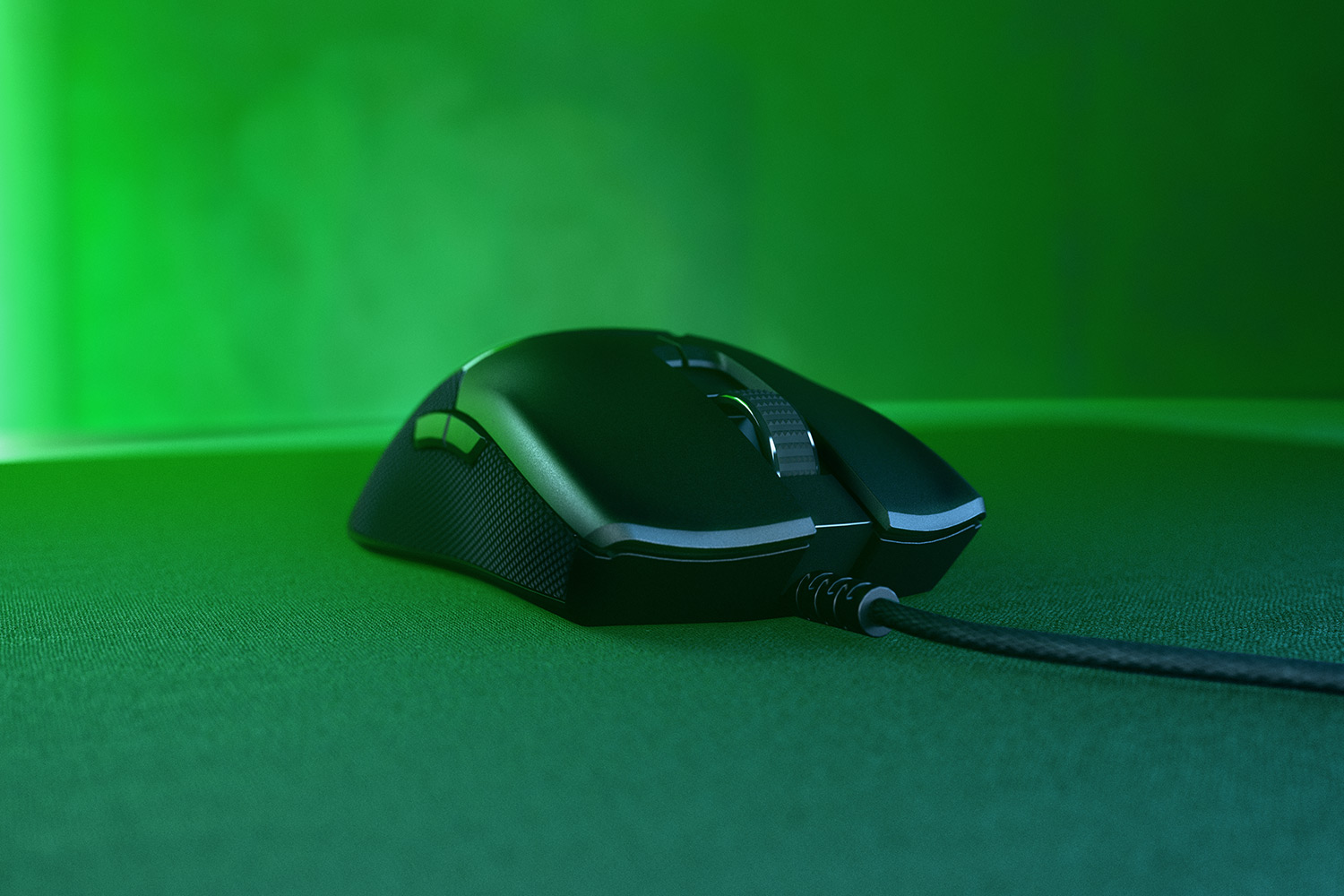 Obviously, the reliability of the movement basically depends on two factors: the first is the resolution with which the mouse captures the images, because the higher this value, the more the static information will be precise and consequently it will better guess the movement with precision. One of the aspects to consider is that the mouse moves on a small and often very small surface compared to the size of the display on which the result of the movement is shown.
Obviously, the reliability of the movement basically depends on two factors: the first is the resolution with which the mouse captures the images, because the higher this value, the more the static information will be precise and consequently it will better guess the movement with precision. One of the aspects to consider is that the mouse moves on a small and often very small surface compared to the size of the display on which the result of the movement is shown.
The other value is precisely the Polling rate, also called UltraPolling in the gaming environment. This data offers a resolution over time: a low value will offer poor optimization, while a higher value will have greater precision, especially in faster movements (as long as the computer can handle the information).
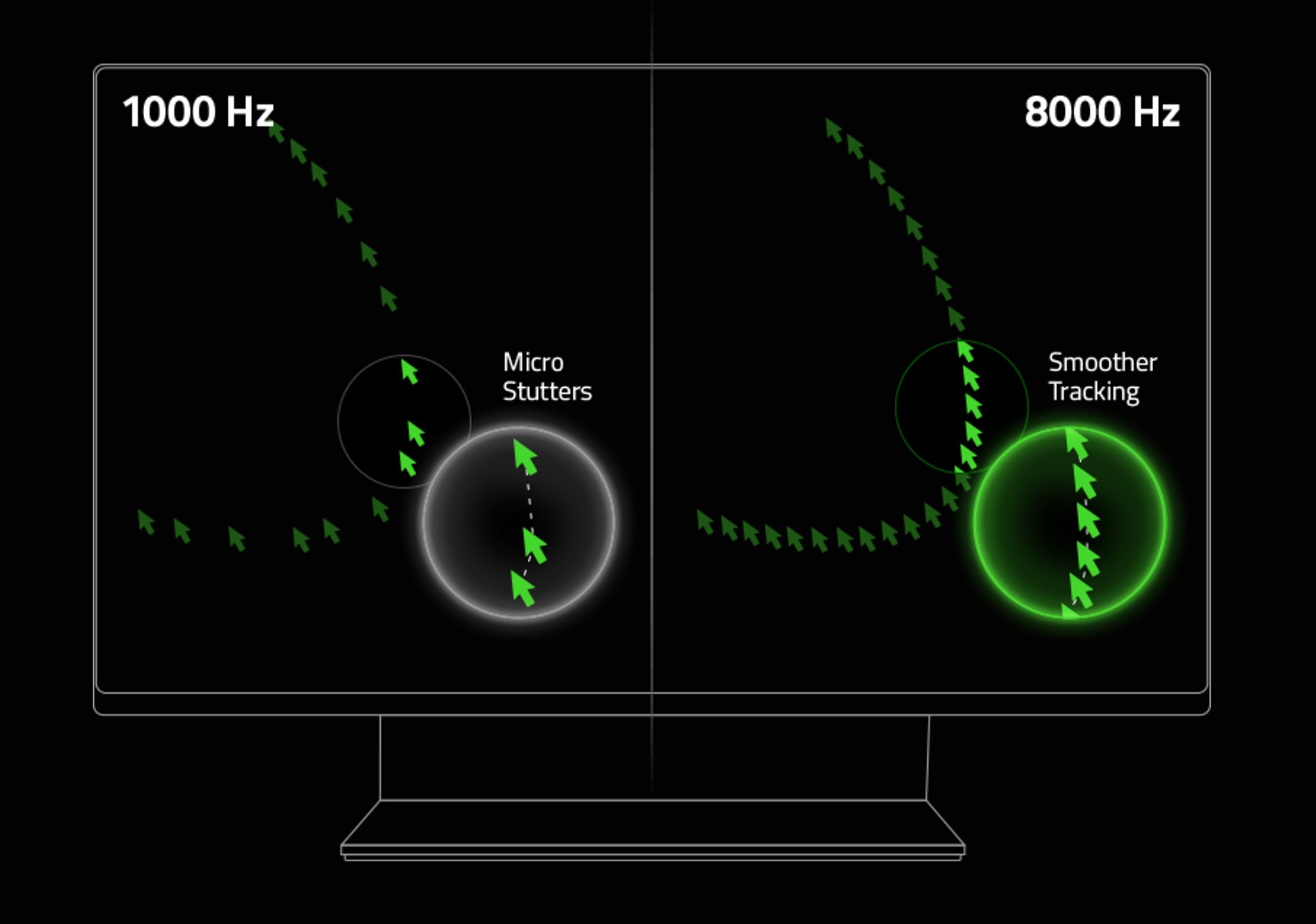 The polling rate determines how many times the mouse communicates with the computer: the higher the value, the more precise the reconstruction of the movement will be, a kind of resolution over time. The best performing mice on the market reach 1,000 Hz (times per second), the Razer Viper 8K even up to 8,000, lowering the latency time to about a tenth of a millisecond
The polling rate determines how many times the mouse communicates with the computer: the higher the value, the more precise the reconstruction of the movement will be, a kind of resolution over time. The best performing mice on the market reach 1,000 Hz (times per second), the Razer Viper 8K even up to 8,000, lowering the latency time to about a tenth of a millisecond
The same thing happens with cinematographic images: the more the number of frames is reduced, the more the human eye is able to perceive the jump between one and the other with a less fluid motion effect. The film runs, but it is not the same with respect to a higher frequency.
The best commercial mice typically arrive at 500 Hz of Polling rate, which means an exchange of information about 500 times per second, which becomes 1,000 in gamer-to-wire mice: in 2019 with the Razer operation cuts the cables the snake brand had amazed the world not so much by the fact of presenting a technology that was wireless (there were already many high-performance wireless mice on the market) but that even without a physical connection it was able to operate at 1,000 Hz of Polling rate, a very high figure compared to the competition at the time.
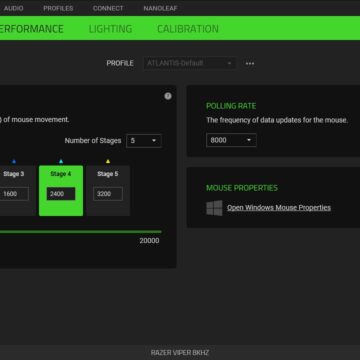
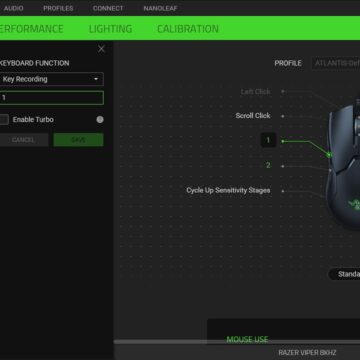
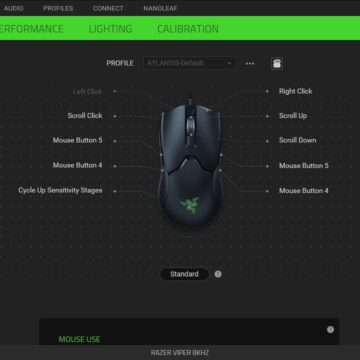
Today Razer takes a new leap forward with the Hyperpolling, which is incredible because it translates into an accuracy of eight times higher than the previous maximum: 8000 Hz. No one is able to achieve this result which results in a feeling of absolute control and the ability to operate at previously unimaginable resolutions, while maintaining full control of the mouse.
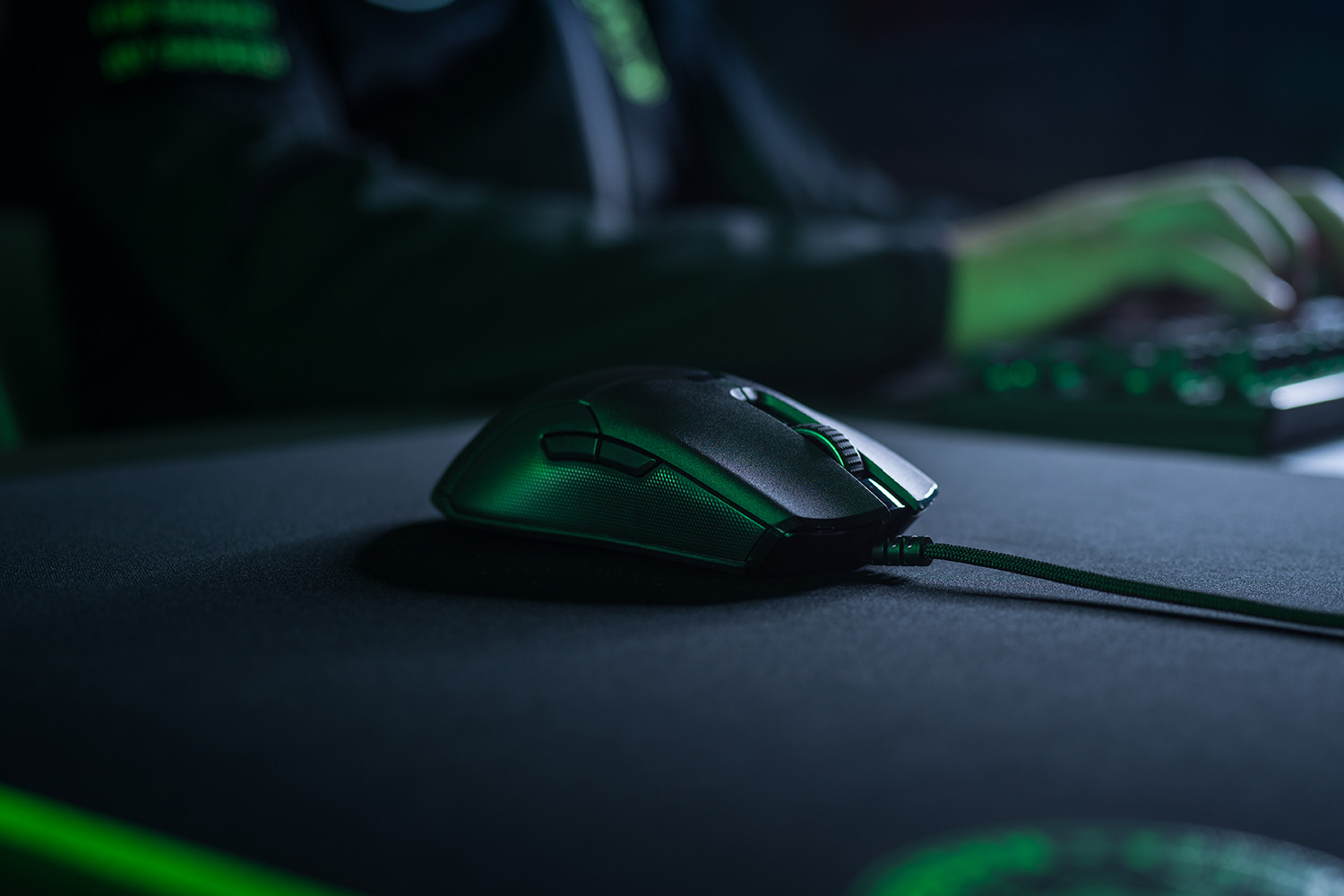
Razer Viper 8K, how it's made
Of course, the Polling rate isn't the only noteworthy detail of the Razer Viper 8K. Inside this mouse there is much more capable of responding to an audience that has high demands both in terms of performance and ergonomics.
The shape is ambidextrous , which is no small detail, given that the vast majority of mice are right-handed. In the box we find the mouse, very light (71 grams) accompanied by a 1.8 meter Speedflex USB-A cable.
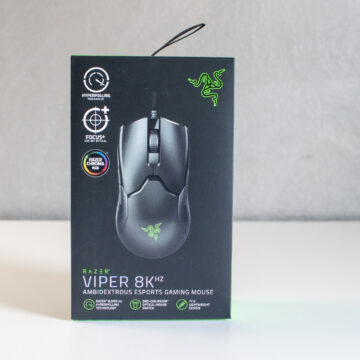
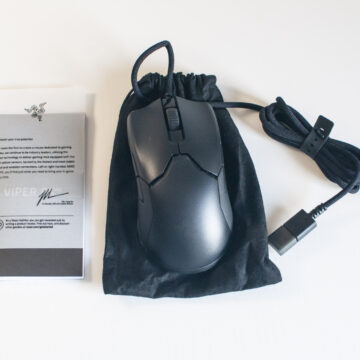
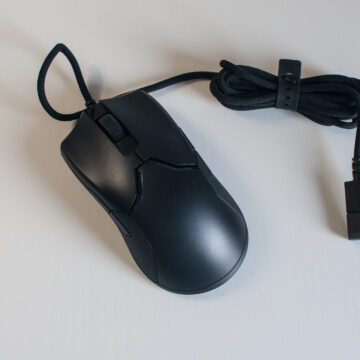
The package also includes a transport bag for travel and transfers, as well as a booklet that illustrates the main features of the device. Finally, two stickers are for marketing. The mouse is made of matte black plastic, which offers a firm grip even with sweaty hands; it is edged in rubber and has four side buttons that are added to the two upper ones and the click wheel, also with rubber profile.
Typical Razer lighting is only on the back (the wheel is not illuminated). On the bottom there are small PTFE ceramic shims, which improve the friction with the surface and which are designed to work best with an ad hoc mat (we use the Razer Gigantus V2, but there are also smaller ones).

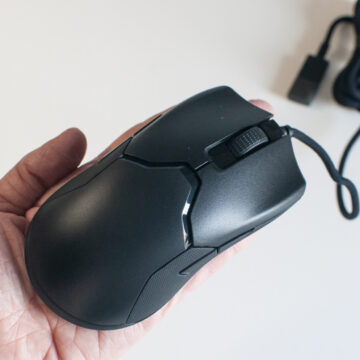
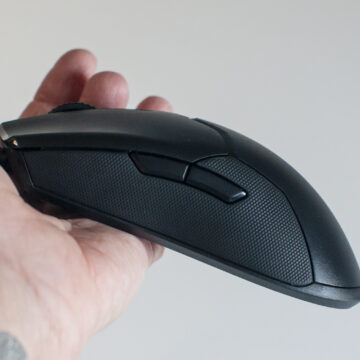
How Razer Viper 8K works
The mouse is, as already mentioned, a high-end product, intended for those who do not like compromises and ask for quality and precision from their devices. Using a mouse like Razer's means having unparalleled control; it must be said that although the mouse reaches 20,000 dpi and 8,000 Hz of Polling rate, this performance is not always indispensable or useful. For this it is possible to switch by means of a key from one of the five predetermined profiles to the other; a small colored LED indicates the set in use.
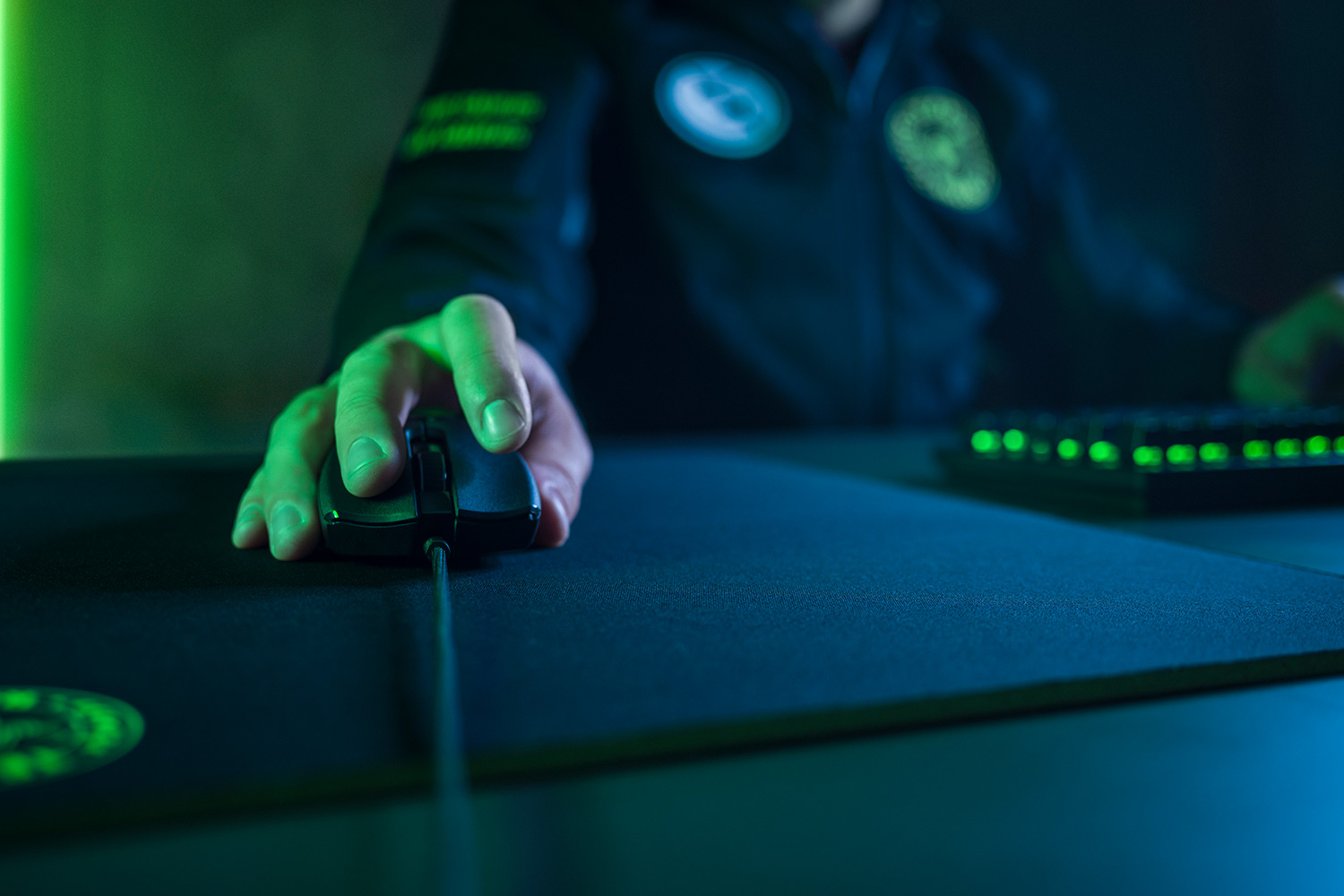 The mouse in use: note that the product is ambidextrous, a factor not to be underestimated
The mouse in use: note that the product is ambidextrous, a factor not to be underestimated
The sets can be modified at will thanks to the Synapse 3.0 drivers, an application through which it is also possible to vary the polling rate passing on a scale of 125/500/1000/2000/4000 and 8000Hz, the latter the default. Unfortunately this option is only available for Windows, but once the sets are determined, they remain in the memory of the mouse and can be used on any computer, even without the Synapse drivers. This means that a Mac user can also define everything via Windows, perhaps with Parallels Desktop 16, and then take advantage of the function on macOS natively.
We tried the Razer Viper 8K mouse both connected directly to Mac and PC without any problems; going through a switch (in our case a model with USB 2.0), however, means having a significantly lower yield; even on macOS we have seen some system blocks lasting a few seconds.
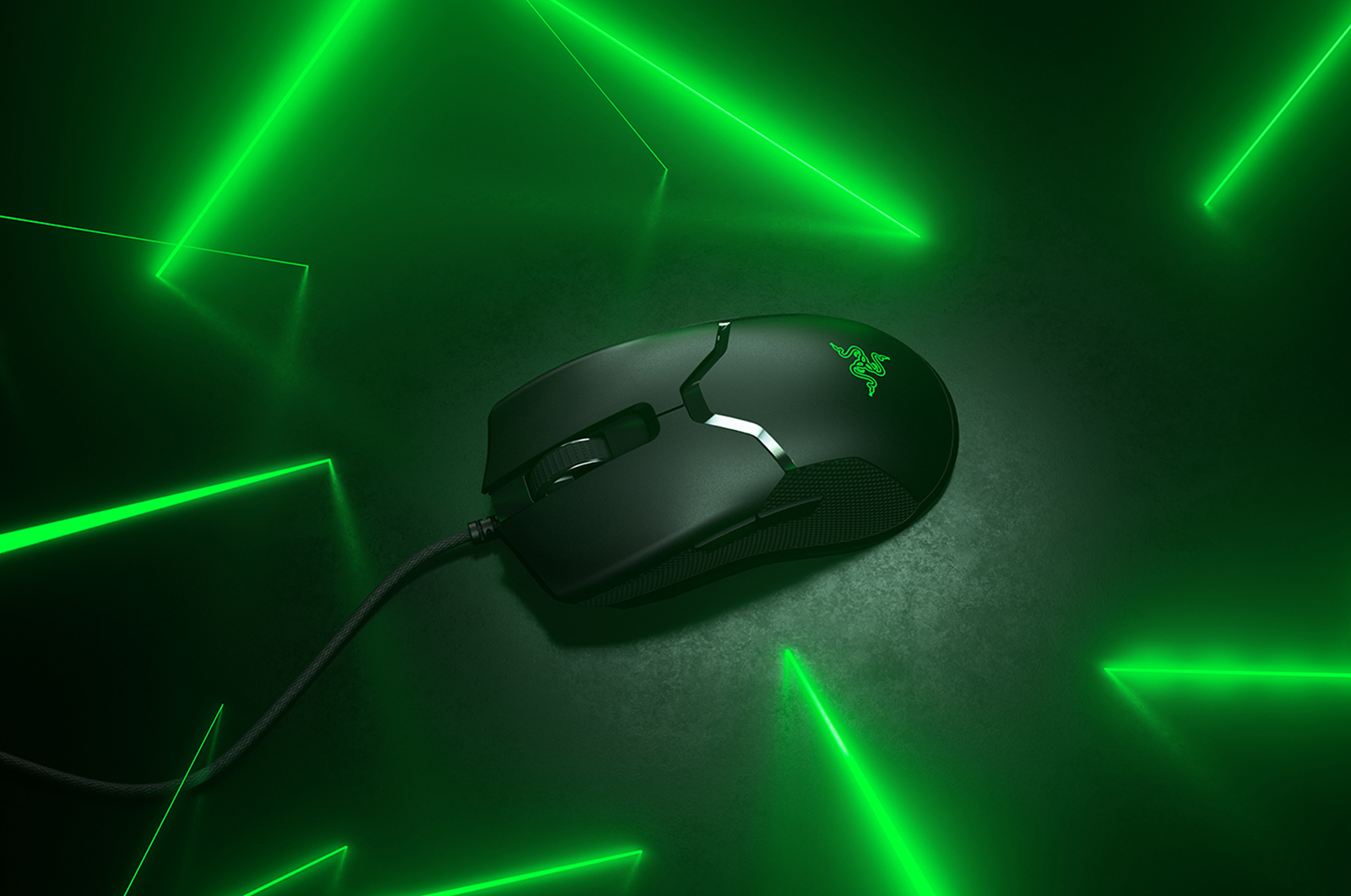 Such an arrangement for Mac users is thus discouraged; better to use, if necessary, a Thunderbolt 3 HUB on the USB 3.0 port. In this case our test was perfect and without any “hiccups”.
Such an arrangement for Mac users is thus discouraged; better to use, if necessary, a Thunderbolt 3 HUB on the USB 3.0 port. In this case our test was perfect and without any “hiccups”.
In the practical test, apps such as Photoshop, Illustrator and even Lightroom gave more than positive results. We then tested the mouse with games like Overwatch, Diablo III and Starcraft II, achieving very good performance even on very large displays. However, the impression is that the mouse gives its best in first-person shooters (from Overwatch to Fortnite) or on titles where precision on a large scale is very important, such as with Minecraft.
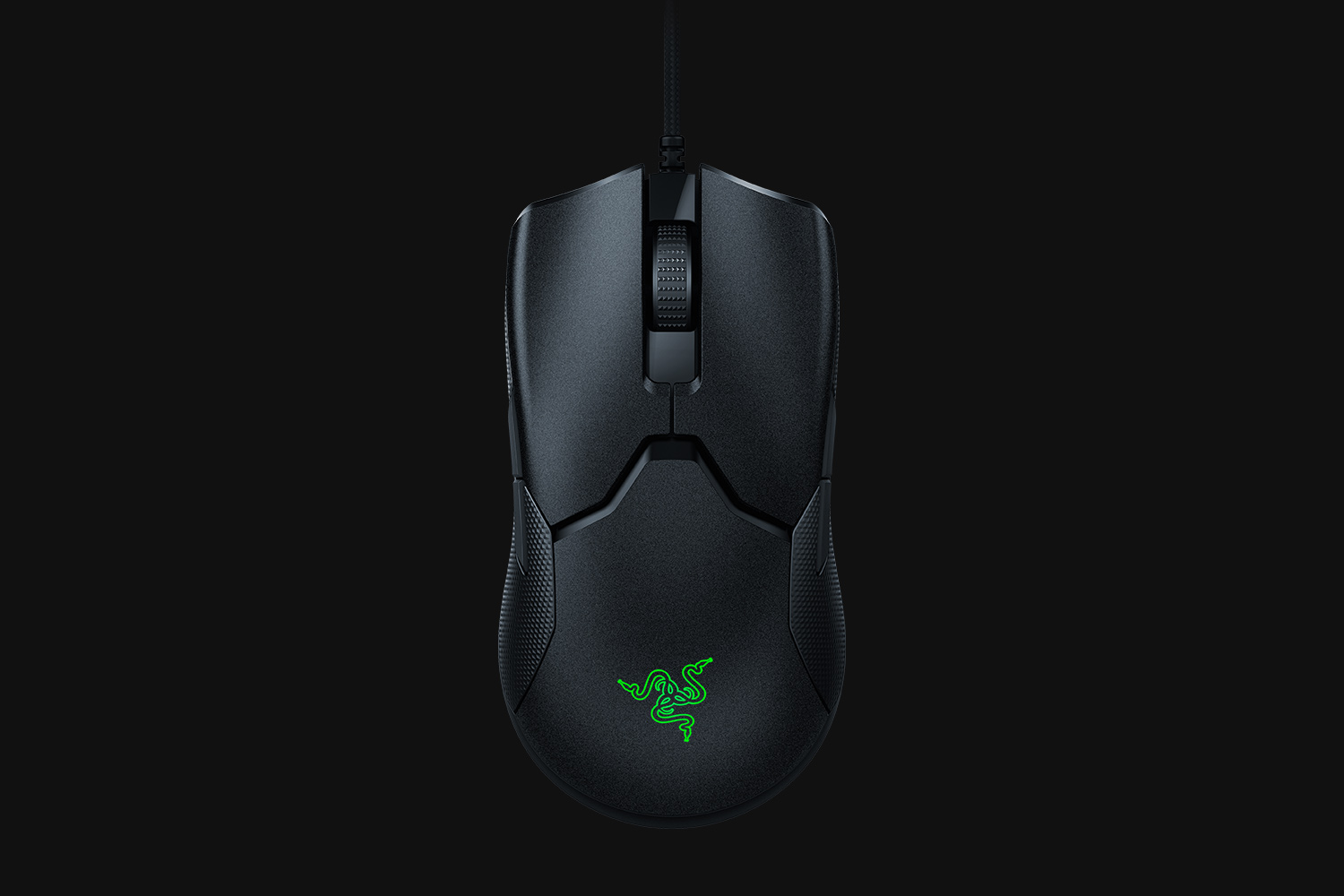
Conclusions
Like its predecessor, this Razer Viper 8K is also the bearer of a new technology, which is likely to lead the way in the market. Currently it is not only the fastest mouse in the world, but also one of the most precise, qualities that add up to almost perfect ergonomics. The price is not exactly popular for a corded mouse, but the underlying technology also justifies it in light of the target market.
Pro:
• Monstrously accurate • Light and fast • Ambidextrous • Aggressive design
Cons:
• Advanced configurations for Windows only • The ambidextrous shape may not please some
Price:
• 89.99 Euro
Razer Viper 8K is available on the Italian website of the parent company, but the whole Viper line is also present on Amazon.it.





